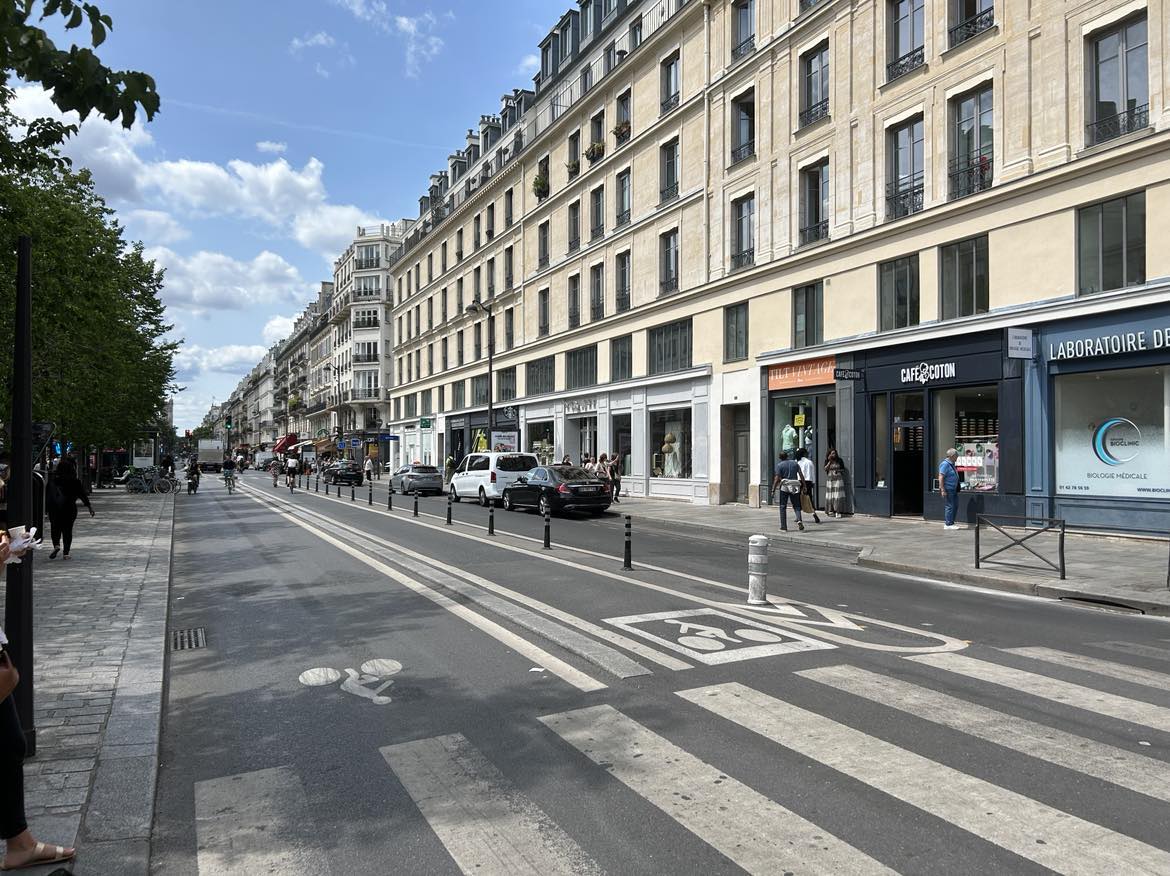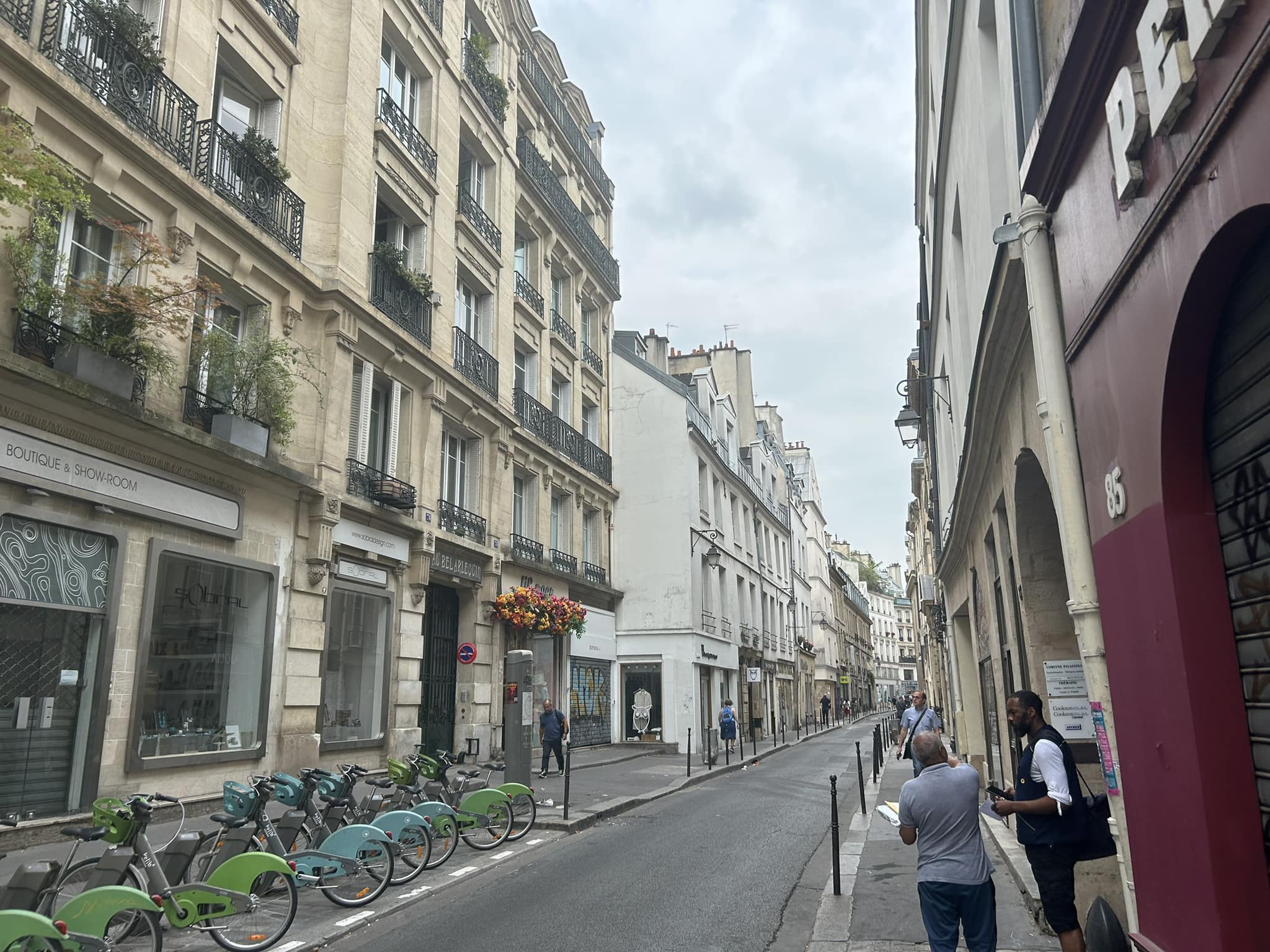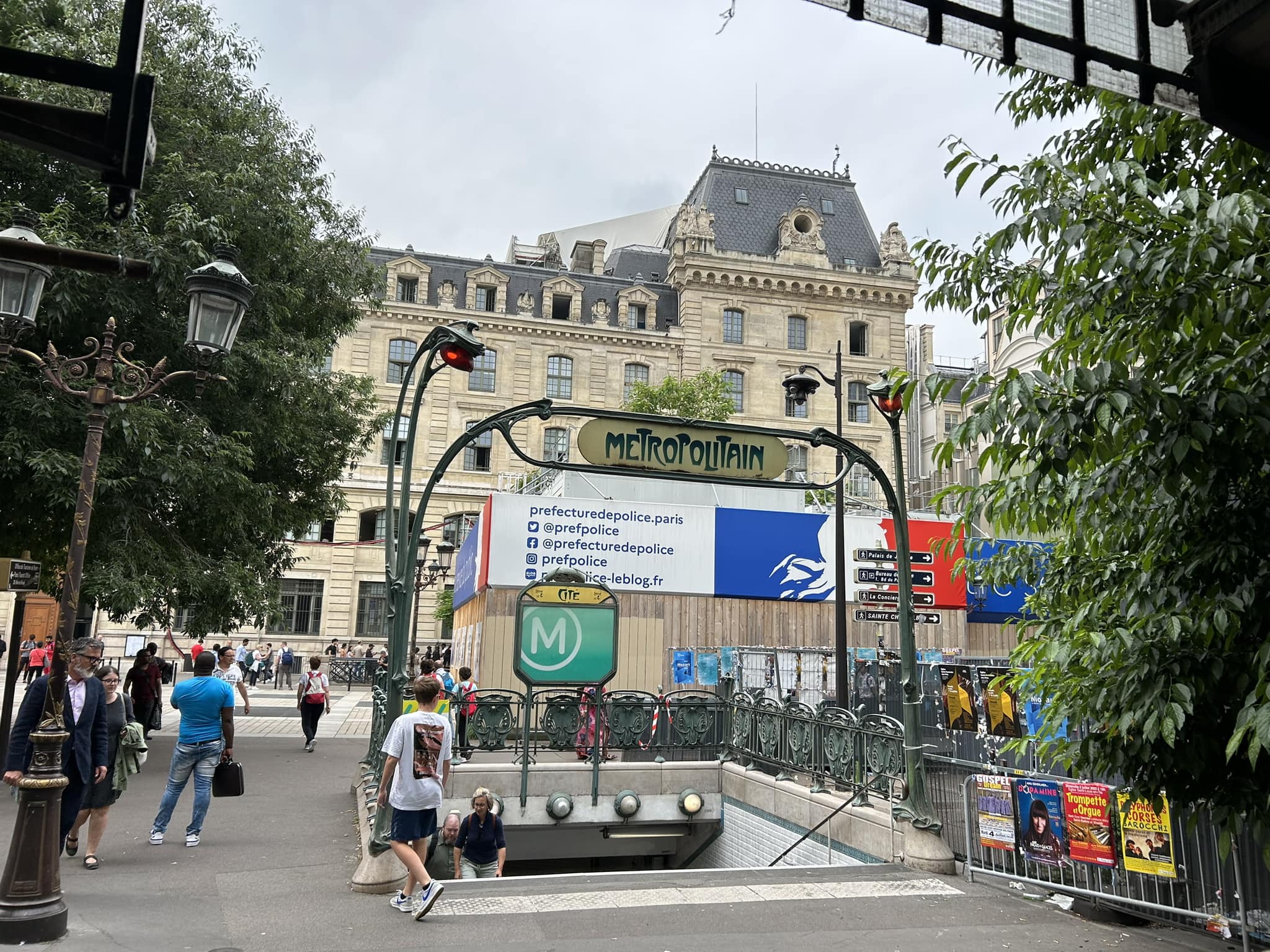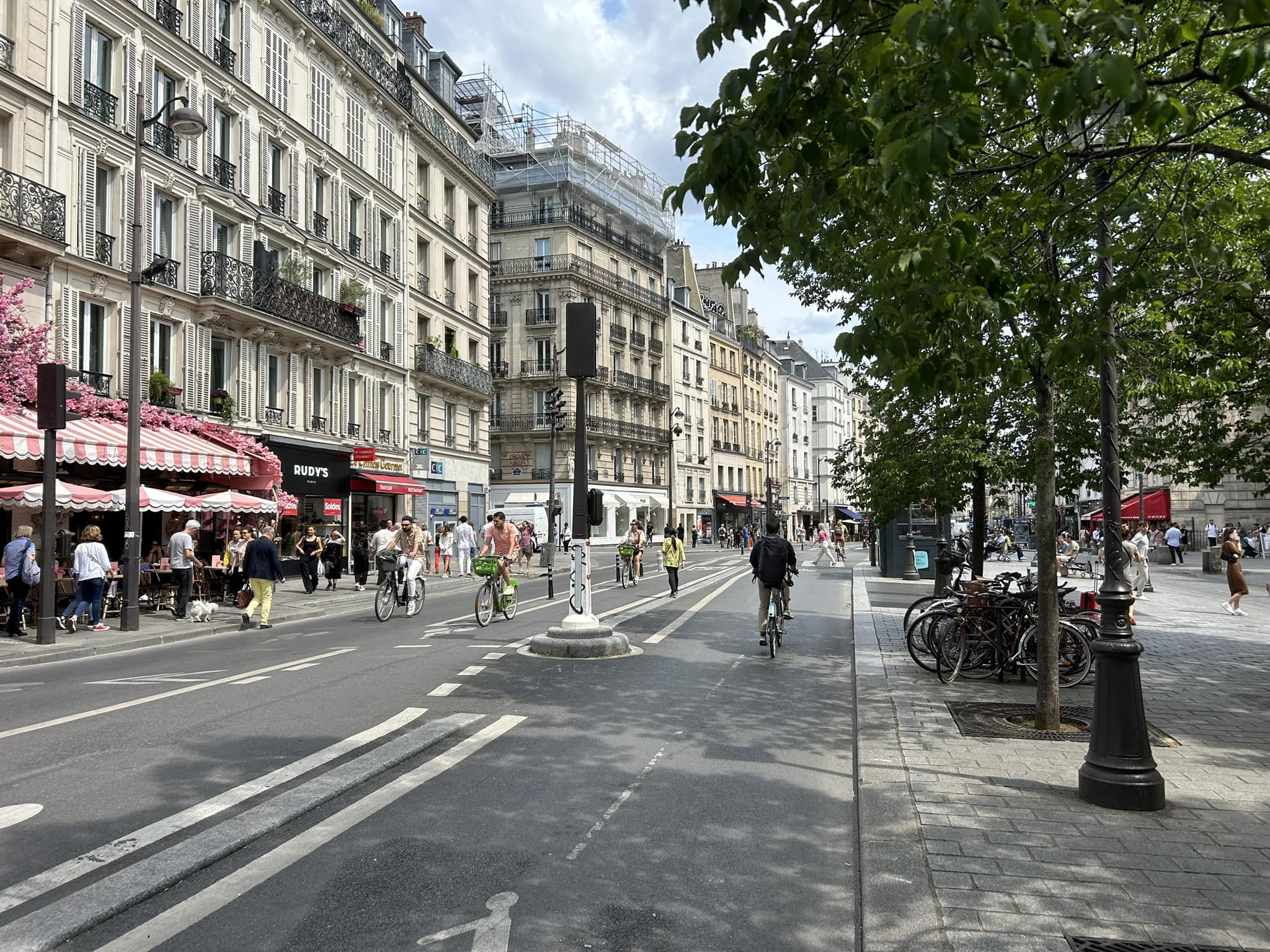My family and I recently visited Paris on our summer vacation. Paris has changed remarkably since I last visited, transforming from a typical car-centric city to a place focused on making bikes, scooters, pedestrians, and public transportation priorities in mobility. It is remarkable to be in a city where you can walk and bike around without fear of cars. We are long way off in California from coming anywhere near to Paris level infrastructure, but Paris - and other cities in Europe - show what is possible when you prioritize people over cars.
Paris has reclaimed roads from cars and prioritized bike lanes and pedestrians. Here is a good example of a street which has devoted most of the space to pedestrians, bike/scooter lanes. Cars are still allowed, but most of the streets are for bikes and there are hard bollards protecting the bikes from the cars.

Parking is prohibited on narrow streets enabling pedestrians to walk on the sidewalks, not be used for car storage. E-Bikes are easily found throughout the city and are heavily used.

Paris has invested heavily in its subway, and the Metropolitan is easily accessible and much faster than driving around Paris. Subways run every 5 minutes, and you do not have to plan your trip around irregular trains – if you miss one, the next one will appear within a few minutes. Buses are frequent and have devoted lanes on streets which make them faster than private cars.


Traveling in 2023 is fundamentally different from twenty years ago due to the smartphone. Paris has an excellent app which enables you to easily use mixed mode public transportation to get from point A to point B. The geolocation function of my iphone made it nearly impossible to get lost in Paris, a huge difference from decades past.


There is a good article on Paris's transformation here:

Car-centric California can learn a lot from Paris. East Palo Alto can particularly benefit from seeing what safe infrastructure looks like in other cities. We are a small, compact town close to many employers: Stanford University, Google, and Facebook to name just three. If we invest in safe biking infrastructure, we can enable kids to bike to school, employees to bike/scooter to work, and make a much more safe and pleasant place to live. I do not expect to see this level of infrastructure immediately, but safe pedestrian and biking infrastructure must be a goal as we invest and rebuild our infrastructure in the next decade.

